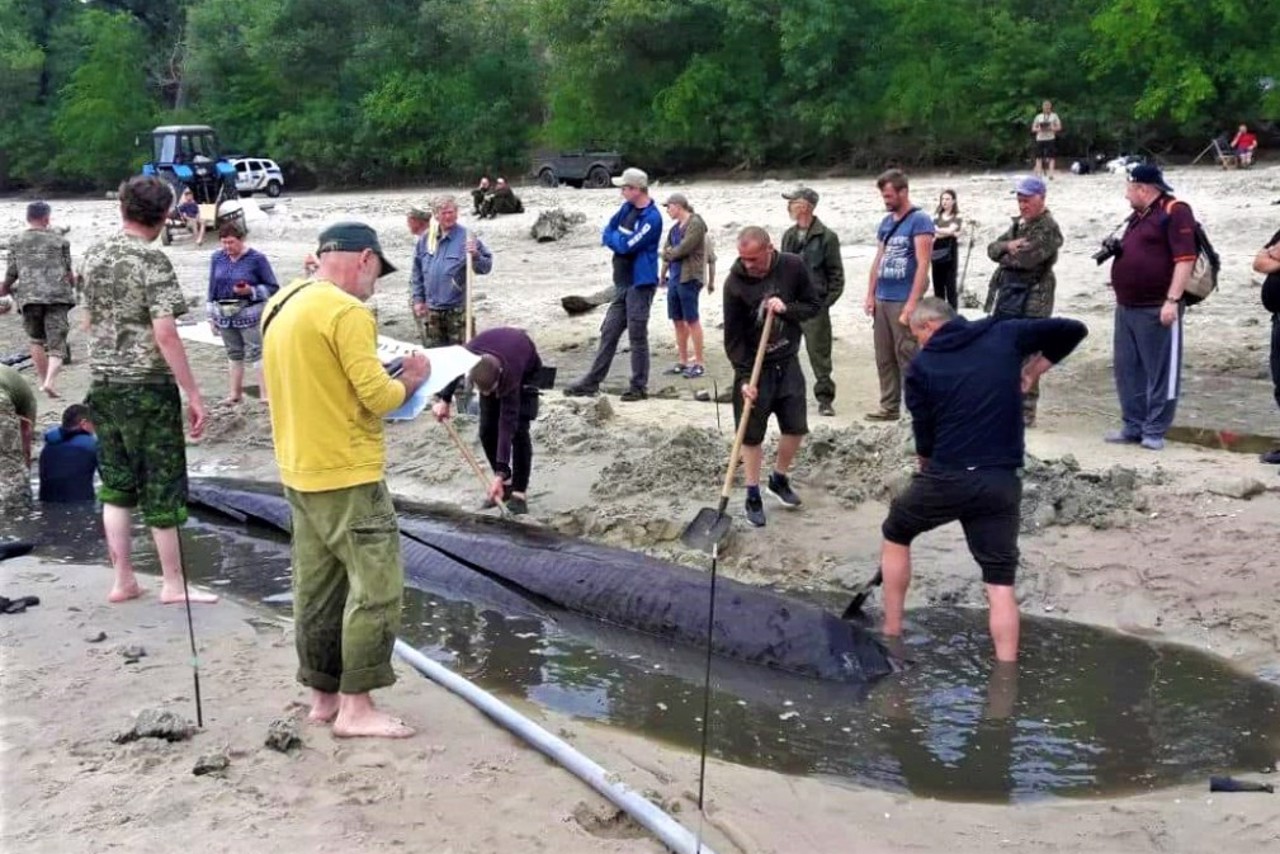The Khortytsia National Reserve announced the find on its Facebook page.
"In connection with the extraordinary ecological situation and the drop in the water level in the Dnipro River as a result of the destruction of the Kakhovka HPP, numerous monuments of history and archeology located in the flooded areas are under threat of destruction. To identify and save them, the employees of the National Nature Reserve "Khortytsia" are conducting daily monitoring of the coastal strip," the message says.
It was during another survey on a previously flooded part of the coast that a tanned boat was discovered, made of a solid oak trunk, almost 7 meters long. In the past, similar boats were found near the shores of Khortytsia, which are connected with the ancient Russian settlement on the island. It existed from the 10th to the 14th century. Such vessels were used for fishing and other trades, local transportation, as well as for ferry service. Perhaps a new find from the same era. According to the state of preservation of the wood, it can be assumed that the age of the boat can reach 500 years. But more accurate dating will become possible after radiocarbon analysis.
The boat was washed out of the sand and moved piece by piece to the restoration hangar. Now it needs urgent preservation in a special chemical solution and further restoration to become a museum exhibit.
"У зв’язку із надзвичайною екологічною ситуацією і падінням рівня води у річці Дніпро внаслідок руйнації Каховської ГЕС під загрозою знищення опинилися численні пам'ятки історії та археології, які знаходилися на затоплених ділянках. Для їх виявлення та порятунку співробітники Національного заповідника "Хортиця" ведуть щоденний моніторинг прибережної смуги", - йдеться у повідомленні.
Саме під час чергового обстеження на раніше затопленій ділянці берега було виявлено довбаний човен, виготовлений з цільного стовбура дуба, довжиною майже 7 метрів. В минулому біля берегів Хортиці знаходили подібні човни, які пов'язані з давньоруським поселенням на острові. Воно існувало з X по XIV cторіччя. Такі плавзасоби використовувалися для риболовлі та інших промислів, місцевих перевезень, а також для обслуговування переправ. Можливо і нова знахідка з тіє ж епохи. Згідно стану збереженості деревини можна припустити, що вік човна може сягати 500 років. Але більш точне датування стане можливе після проведення радіовуглецевого аналізу.
Човен був розмитий з піску та по частинах переміщений до реставраційного ангару. Зараз він потребує термінової консервації у спеціальному хімічному розчині та в подальшому реставрації, аби стати музейним експонатом.



